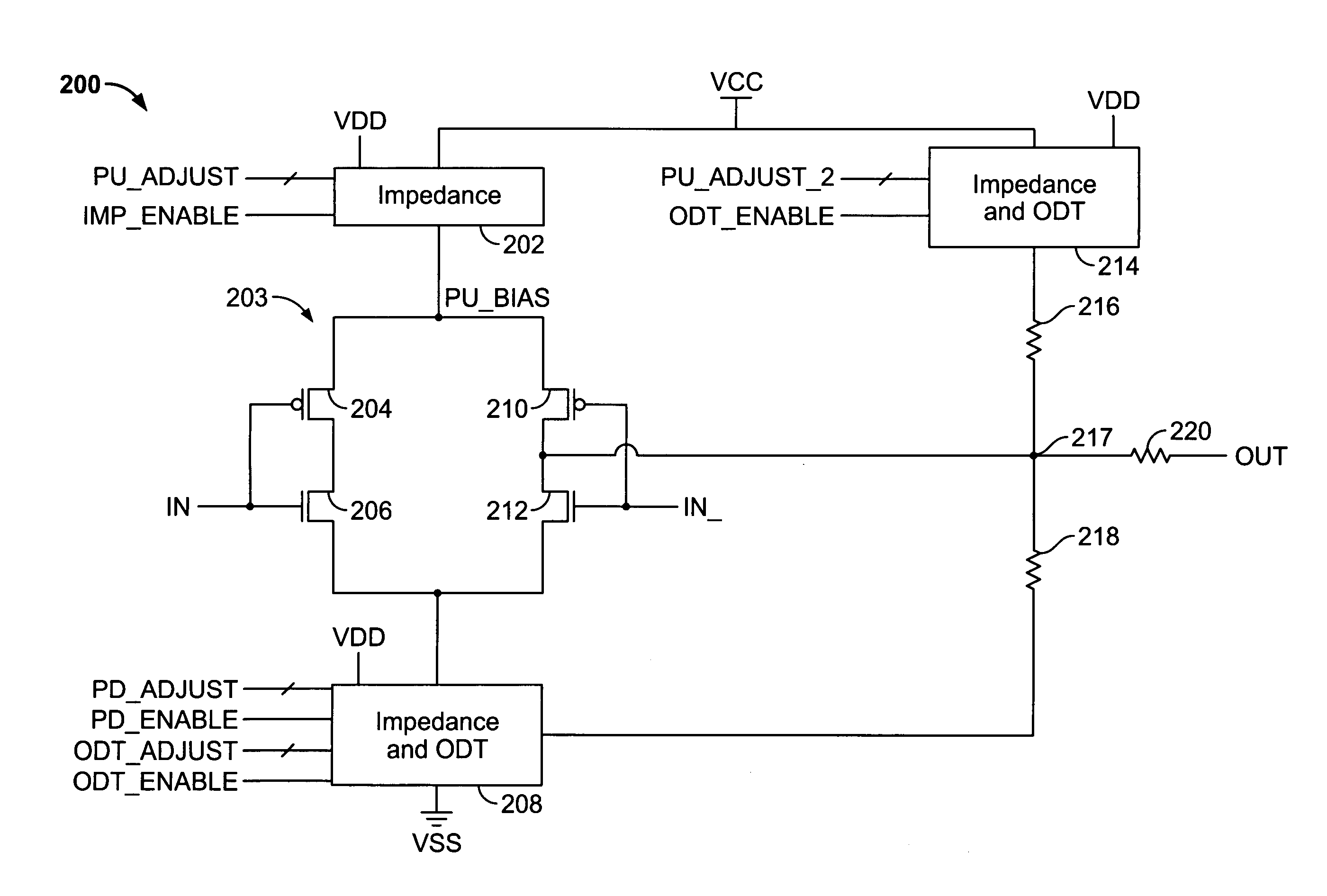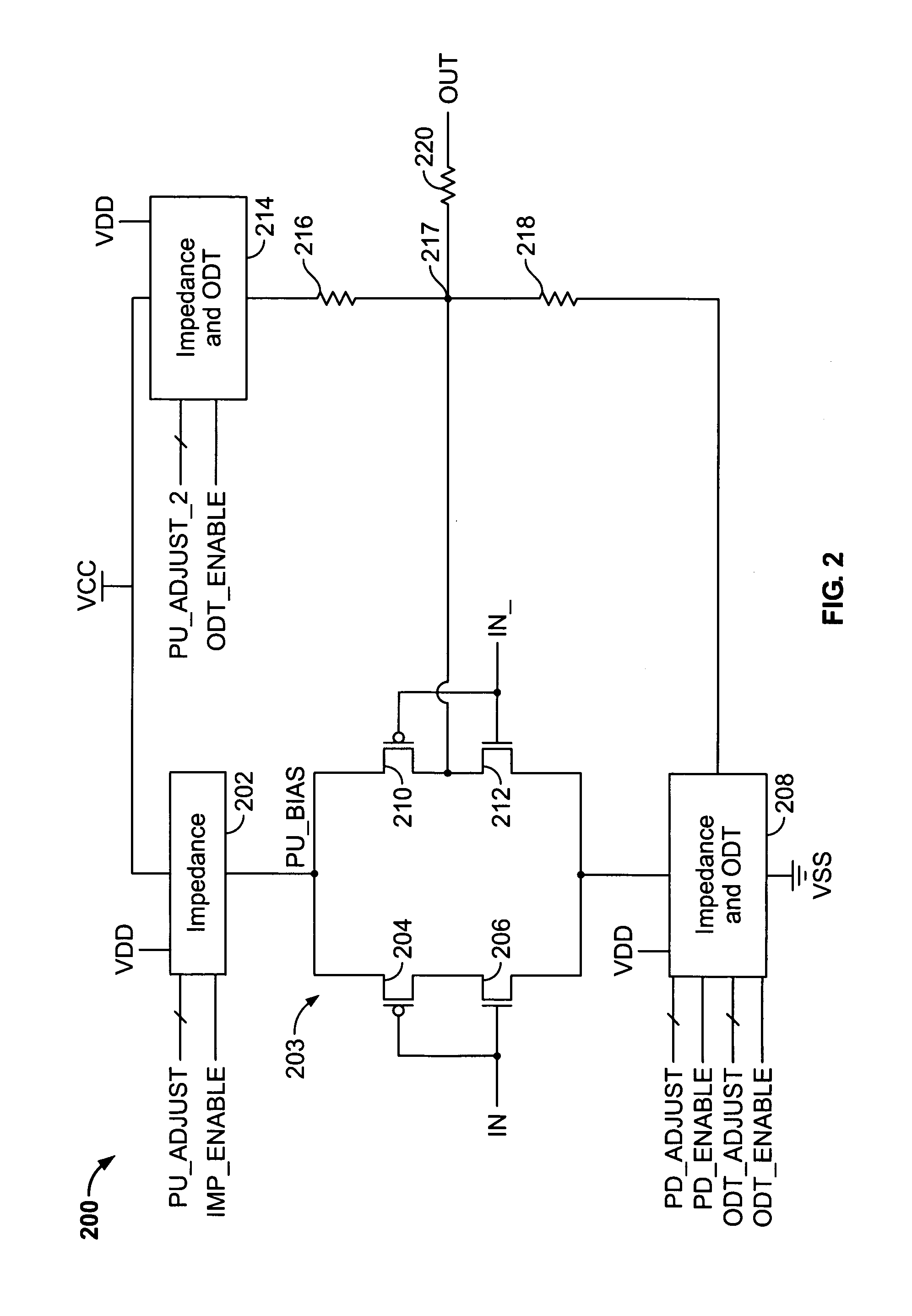Pseudo-differential output driver with high immunity to noise and jitter
a differential driver and high-immunity technology, applied in logic circuits, pulse techniques, reliability increasing modifications, etc., can solve the problems of large area consumption, noise and jitter, differential drivers are often relatively complex, etc., and achieve the effect of greater immunity to noise and jitter
- Summary
- Abstract
- Description
- Claims
- Application Information
AI Technical Summary
Benefits of technology
Problems solved by technology
Method used
Image
Examples
Embodiment Construction
[0015]FIG. 1 illustrates a known single-ended output driver 100. Single-ended output driver 100 includes driver blocks 102 coupled in parallel between a source of relatively high voltage (“VCC”) and a source of relatively low voltage (“VSS”). Each driver block 102 includes P-type metal-oxide semiconductor (“PMOS”) transistor 104, resistors 106 and 108, and N-type metal-oxide semiconductor (“NMOS”) transistor 110, all serially coupled between VCC and VSS. Although single-ended output driver 100 includes three driver blocks 102, any suitable number of driver blocks 102 can be used.
[0016]Each driver block 102 accepts a single bit IN[N] of input signal bus IN, which is coupled to the gates of PMOS transistor 104 and NMOS transistor 110, and drives output signal OUT, which is coupled between resistors 106 and 108. Each driver block 102 behaves substantially like an inverter without a full rail-to-rail voltage swing. That is, when its input signal IN[N] represents a logical 0, PMOS transi...
PUM
 Login to View More
Login to View More Abstract
Description
Claims
Application Information
 Login to View More
Login to View More - R&D
- Intellectual Property
- Life Sciences
- Materials
- Tech Scout
- Unparalleled Data Quality
- Higher Quality Content
- 60% Fewer Hallucinations
Browse by: Latest US Patents, China's latest patents, Technical Efficacy Thesaurus, Application Domain, Technology Topic, Popular Technical Reports.
© 2025 PatSnap. All rights reserved.Legal|Privacy policy|Modern Slavery Act Transparency Statement|Sitemap|About US| Contact US: help@patsnap.com



